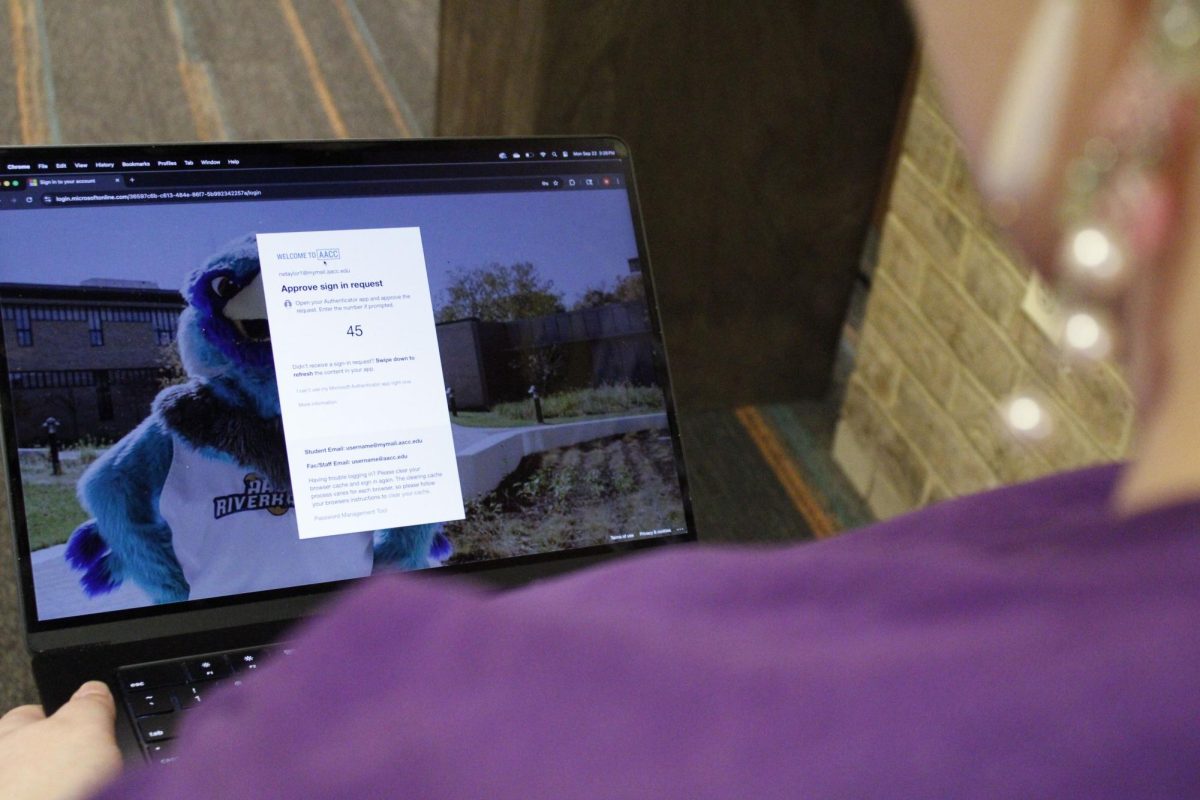
Photo by Nicholas Taylor
AACC requires new students to use a two-factor system to verify their identities on college platforms.
Students who get new MyAACC accounts this semester will have to verify their identities with a phone number before logging in.
The process, called two-factor authentication, requires two forms of identification to verify a user’s identity when accessing college email or the MyAACC webpage.
“Multifactor authentication is one of the simplest and most effective ways we can protect our community,” Vice President for Information and Instructional Technology Richard Kralevich said. “It helps safeguard student information, keeps our learning systems secure and reduces the risk of disruptions.”
Students who had MyAACC accounts before July 7 do not have to verify their identities with a second source—for now. Kralevich said all students eventually will have a two-factor requirement.
Faculty and staff already use the two-factor process.
Some students said the extra step is time-consuming.
“It just adds more time to your day that you have to do,” Mitch Riith, a first-year broadcast journalism student, said. “If you don’t have your phone number down … you forget your password somehow … you got to … go to IT.”
Éva Parry, a second-year transfer studies student, agreed.
“Originally I’d say it was kind of annoying to do that every time to sign into my account since I do a lot of stuff for school on my phone,” Parry, who had to sign up for two-factor authentication when she held a work/study job at the college, said.
But some students said the process keeps their information safe.
“I feel more secure about the fact that even if someone found out my password, they wouldn’t necessarily be able to get into my account, which makes me feel good, because people can’t, like, go and see my grades [or] turn in work that isn’t completed,” Emily Sawyer, a pre-med and neuroscience student, said. “So it does give me a little bit of security but I find it a little more inconvenient for my student email.”
Kralevich confirmed that “passwords alone can be guessed, stolen or phished. Adding a second step makes it much harder for attackers to gain access to sensitive systems, such as email, online courses and student records. This change strengthens security for both students and the college.”
